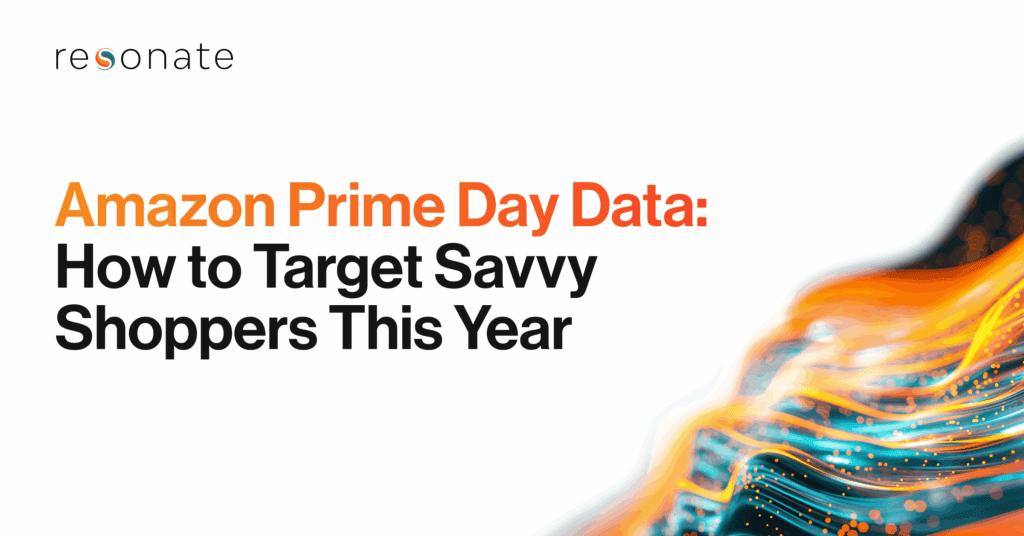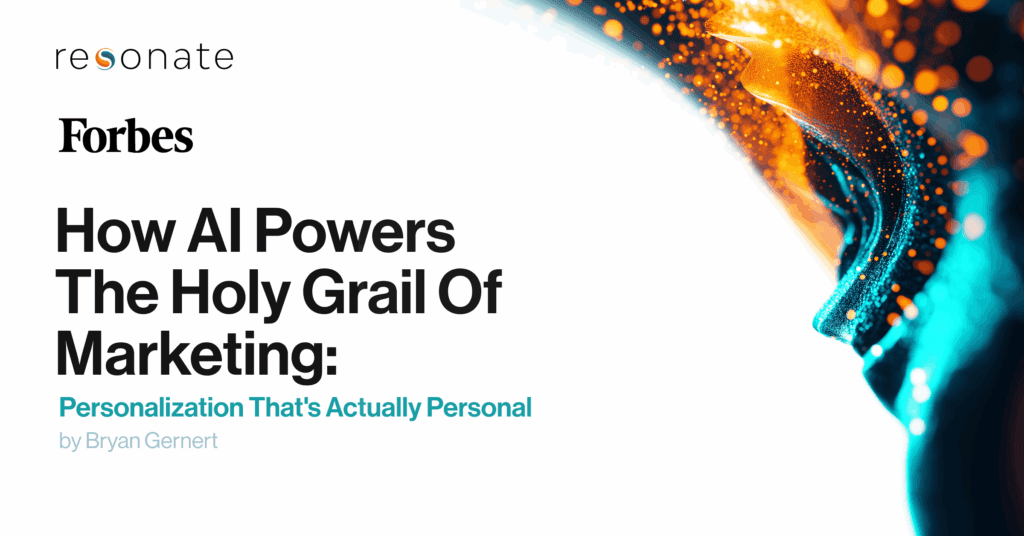Last week’s SPARK 2017 conference hosted by TrackMaven focused on the future of marketing and how marketers can use data-driven strategies to create successful campaigns. At Resonate, we’re passionate about using our proprietary data to drive effective targeting and messaging strategies and I was eager to hear from others on how they incorporate data to improve campaign performance and engagement. A few key themes emerged from the conference that echoed what we believe and practice here at Resonate:
Data should complement creativity, not stifle it.
Many in the media business are initially wary of big data because they worry it will hinder creativity. Fortunately, agencies and media companies alike are starting to see the ways in which their data and creative teams can work together to achieve success. If you’re facing this challenge in your own organization, it’s important to be aware of how data products can be perceived as threats. Be prepared to position data as a tool that allows already talented marketers to reach new heights, not minimalize them. Remember, the ultimate benefiter of big data that informs targeting is the end consumer. If data and creative can be combined to create better engagement with your target audiences then it’s a win-win for everyone.
Knowing the goals of your audience, whether internal or external, is critical to data positioning.
The key to incorporating data into your marketing campaign strategies is to make understanding the data “zero effort” for the team involved. As Ari Isaacman Bevacqua from the New York Times pointed out, people have limited time – show them the value data can have in their everyday work and incorporate that data into their existing “oriented goals” meetings. Seeing and understanding the positive impact of data without taking several steps to get there is critical to making the case for data-drive marketing. At the end of the day, everyone wants to create engaging content and campaigns. Knowing the goals of your audience, whether internal of external, is critical to positioning data that can help achieve success for all involved.
Don’t just cherry pick the data that validates your organization’s current decisions.
While it’s tempting to simply validate existing strategies and decisions, this approach limits the full potential data offers your organization. Don’t be scared of data that contradicts current tactics and beliefs. Change can be a good thing and it’s important to use all of the data available to tell an accurate story. In the long run, using all available data will help your organization identify where improvements are needed and allow you to be more successful when engaging your target audiences.
Content plus artificial intelligence results in personalized experiences for your audiences.
The proof is in the pudding and as Patricia Travaline from Skyword mentioned during her session, artificial intelligence works. 40% of all Amazon sales are from the algorithm “people who bought this also bought this…”. AI can provide insight into exactly what people are looking to buy and ensure brands are delivering the right message to the right person. Consider that 74% of online consumers get frustrated with websites when content appears that does not pertain to their interests. Personalization has proven to be the driving desire from today’s consumers, and they are more likely to engage with you if you speak to their individual interests and purchase drivers. And while 77% of marketers believe real time personalization is important, just 60% of them are incorporating a digital experience that’s personalized to their customer audience The time is now for all marketers to tap into individuals’ motivations, values and beliefs in order to best engage and motivate them to convert.
Show people content that directly reflects who they are.
As Laura O’Shaughnessy from SocialCode mentioned during her session, it’s crucial to develop content that your target audience can relate to personally. When consumers see images of people like themselves in ads they are 35% more likely to interact. As many of you probably hear from consumers, the general feedback is “Don’t send me banner ads that aren’t relevant to me”. In order to achieve this desired relevance, brands must focus on developing multiple versions of a campaign from both an imagery and messaging standpoint so they can target people more efficiently based on their individual interests and desires. The one size fits all web ad is dead to today’s consumers.
The general takeaway from the conference is that today’s consumers want personal experiences and data-driven creativity is a means to getting there. We at Resonate hold this as our mantra and have worked to develop our survey platform. We’re here to help you achieve relevance at the individual level at scale so that you are reaching the right consumers at the right time with the right message. The end result is more relevancy with your target audiences and increased engagement and conversion.



